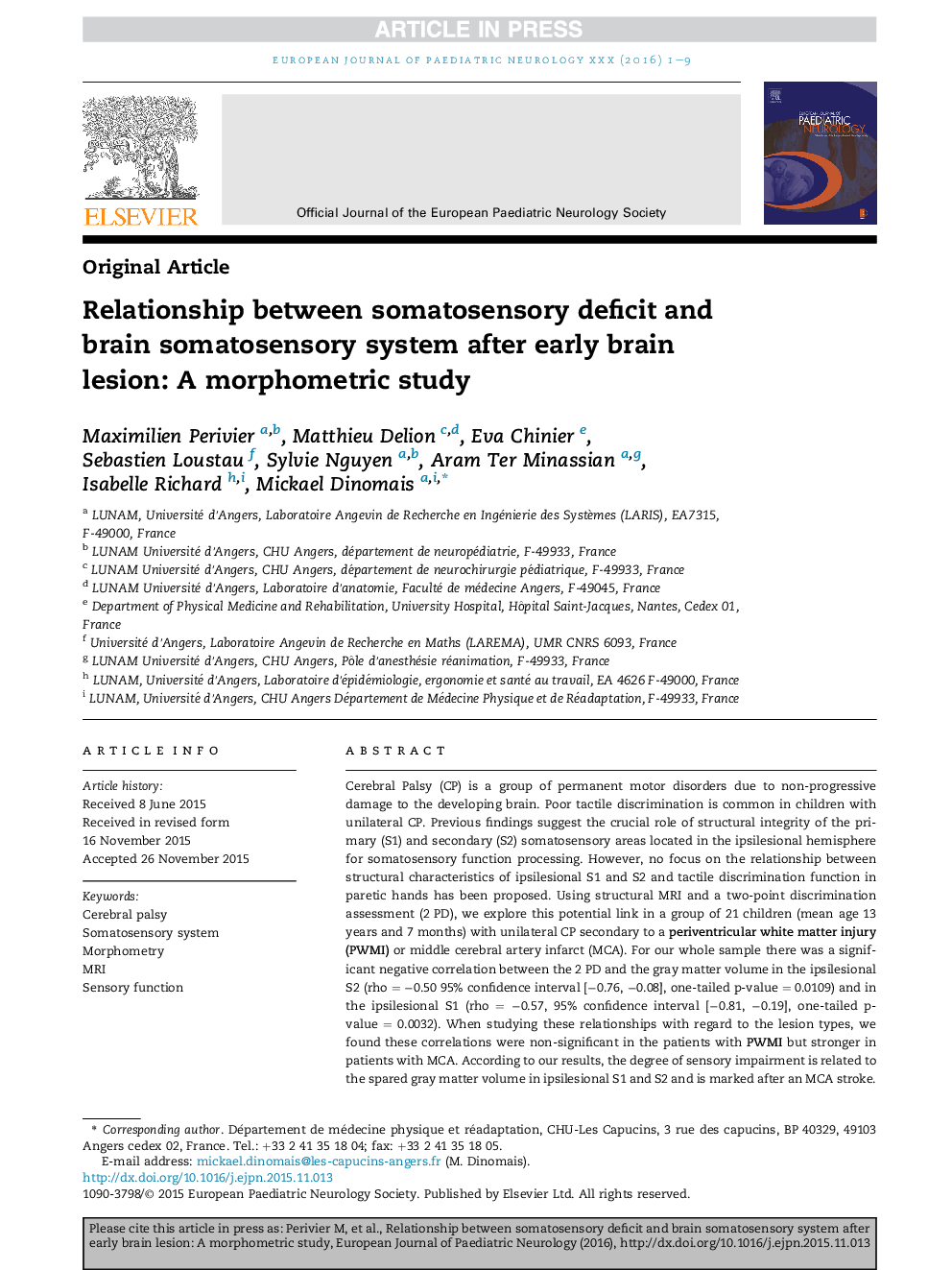| Article ID | Journal | Published Year | Pages | File Type |
|---|---|---|---|---|
| 6016535 | European Journal of Paediatric Neurology | 2016 | 9 Pages |
Abstract
Cerebral Palsy (CP) is a group of permanent motor disorders due to non-progressive damage to the developing brain. Poor tactile discrimination is common in children with unilateral CP. Previous findings suggest the crucial role of structural integrity of the primary (S1) and secondary (S2) somatosensory areas located in the ipsilesional hemisphere for somatosensory function processing. However, no focus on the relationship between structural characteristics of ipsilesional S1 and S2 and tactile discrimination function in paretic hands has been proposed. Using structural MRI and a two-point discrimination assessment (2 PD), we explore this potential link in a group of 21 children (mean age 13 years and 7 months) with unilateral CP secondary to a periventricular white matter injury (PWMI) or middle cerebral artery infarct (MCA). For our whole sample there was a significant negative correlation between the 2 PD and the gray matter volume in the ipsilesional S2 (rho = â0.50 95% confidence interval [â0.76, â0.08], one-tailed p-value = 0.0109) and in the ipsilesional S1 (rho = â0.57, 95% confidence interval [â0.81, â0.19], one-tailed p-value = 0.0032). When studying these relationships with regard to the lesion types, we found these correlations were non-significant in the patients with PWMI but stronger in patients with MCA. According to our results, the degree of sensory impairment is related to the spared gray matter volume in ipsilesional S1 and S2 and is marked after an MCA stroke. Our work contributes to a better understanding of why some patients with CP have variable somatosensory deficit following an early brain lesion.
Related Topics
Life Sciences
Neuroscience
Developmental Neuroscience
Authors
Maximilien Perivier, Matthieu Delion, Eva Chinier, Sebastien Loustau, Sylvie Nguyen, Aram Ter Minassian, Isabelle Richard, Mickael Dinomais,
